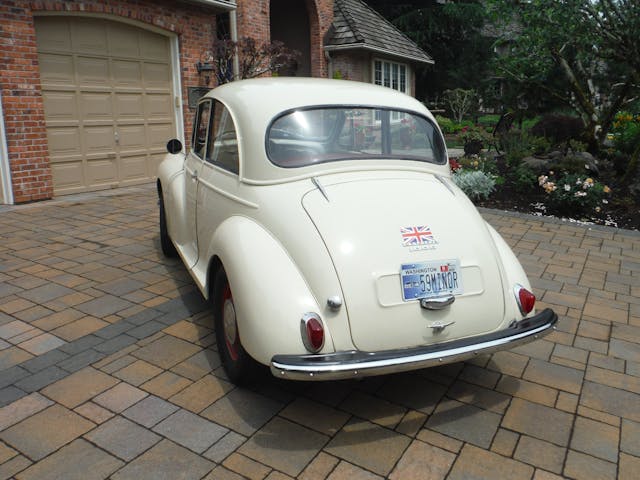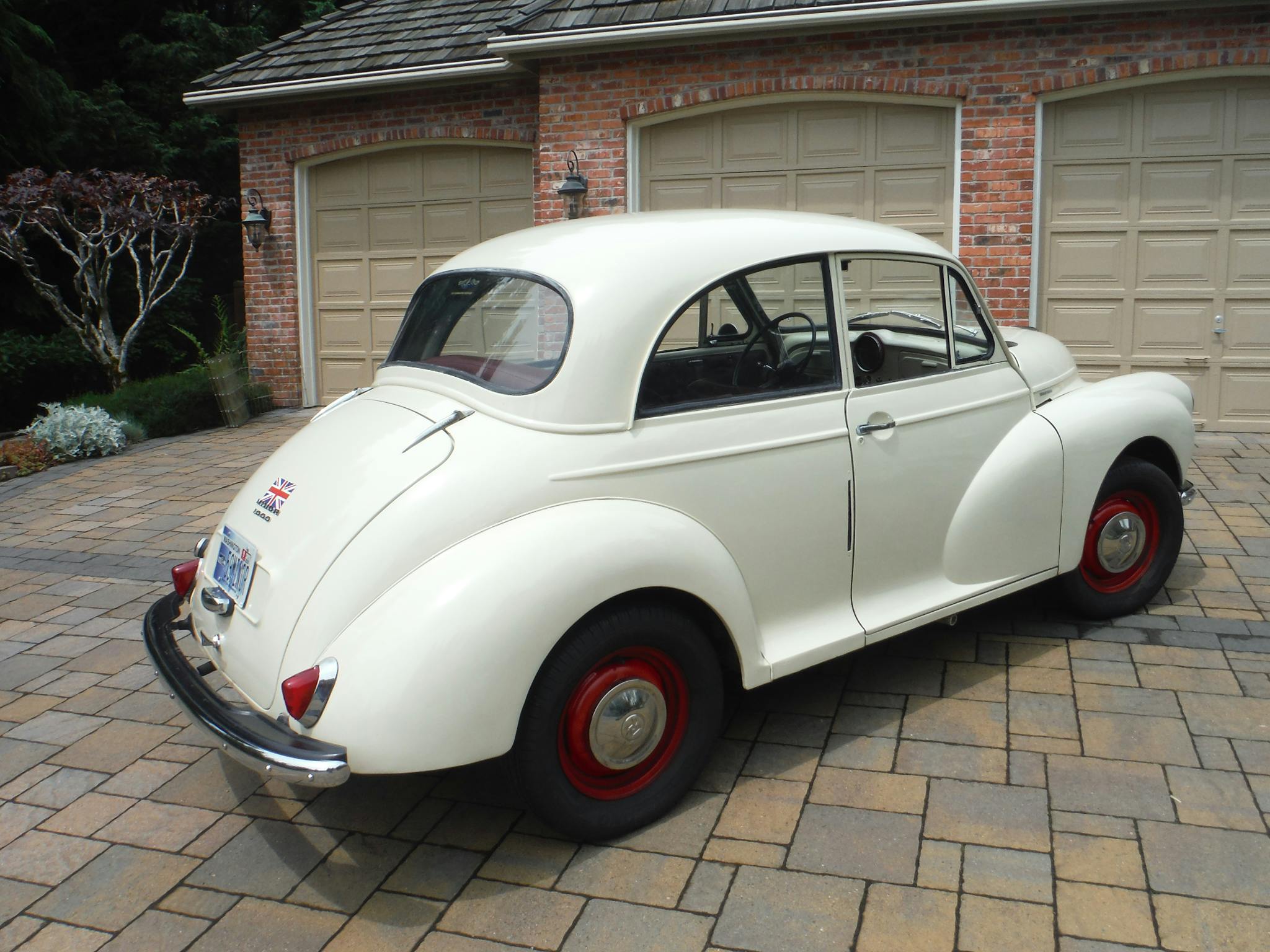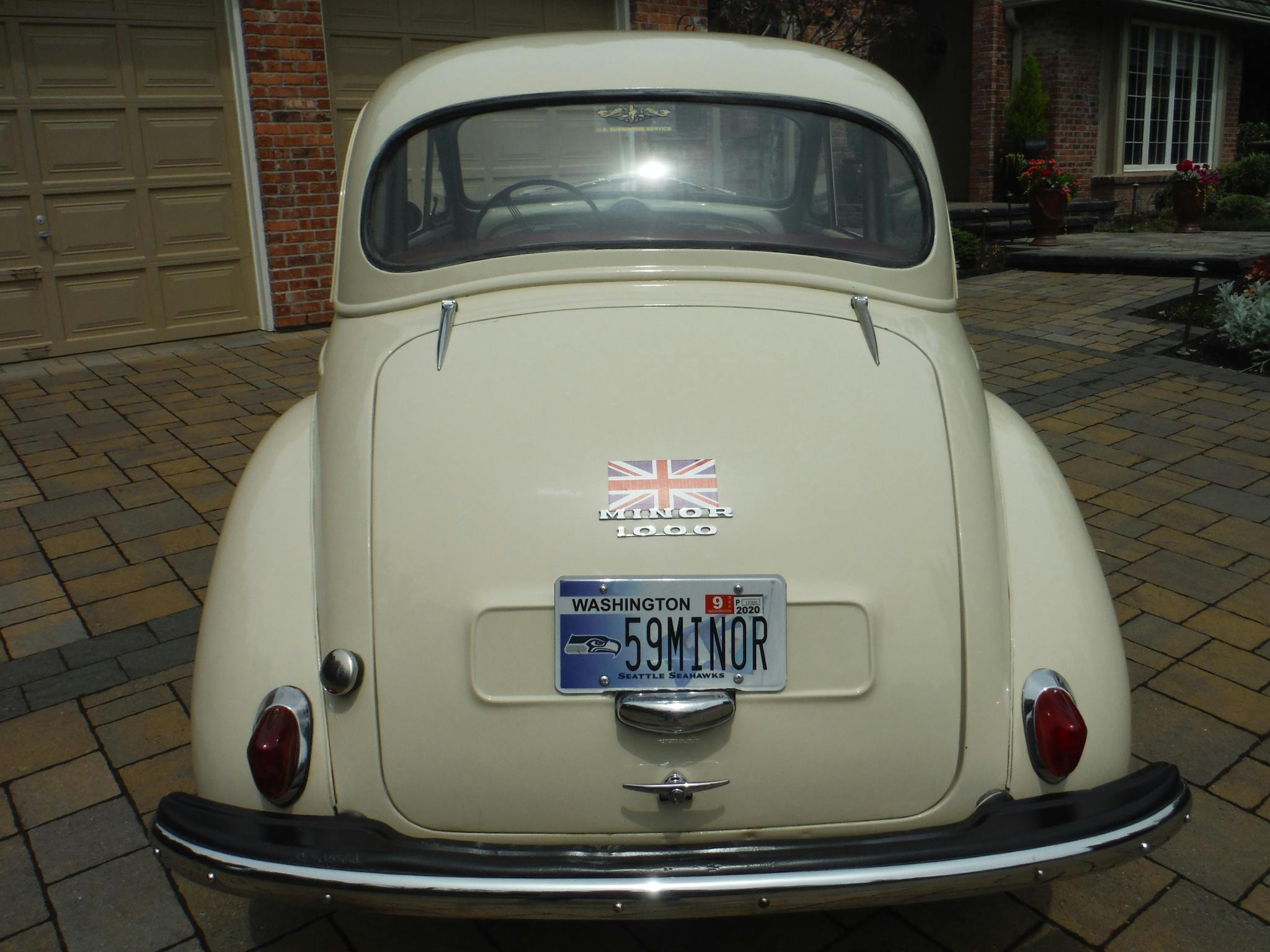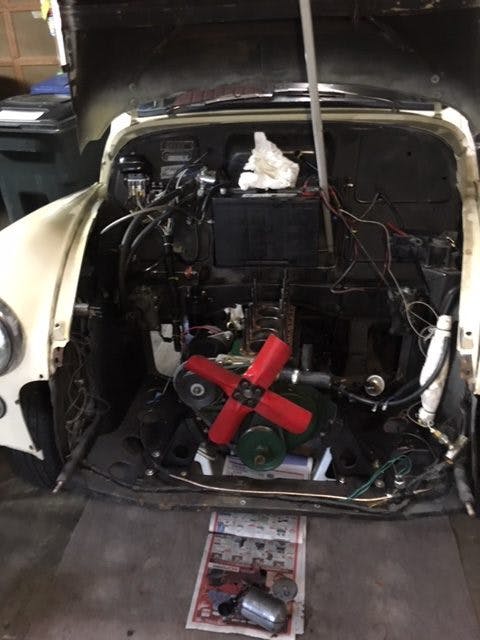Rides from the Readers: 1959 Morris Minor 1000
Hagerty readers and Hagerty Drivers Club members share their cherished collector and enthusiast vehicles with us via our contact email, tips@hagerty.com. We’re showcasing some of our favorite stories among these submissions. To have your car featured, send complete photography and your story of ownership to the above email address.
Today’s featured vehicle is a 1959 Morris Minor 1000. Although Morris began Minor production in 1948, the 1000 model featured here—distinguished by its “A-series,” 948-cc four-pot and one-piece windshield—didn’t hit the streets until 1956. From 1956–71, new Minor 1000s roamed the streets of Britain in droves; Morris would eventually produce more than 1.5 million, with body styles ranging from two- and four-door hardtop sedans to a two-door convertible and a two-door Traveller woody “wagon.” UK-specific models even included pickup and van iterations. The only major mechanical change to this diminutive top-seller was an engine upgrade from the 37-hp, 948-cc motor to a 49-hp, 1098-cc variation in 1962.

This particular Minor 1000 belongs to Christopher Lane, who uses it as his daily driver for local trips around his hometown of Seattle. He’s made some prudent modifications “to improve performance and increase the odds of my staying alive a bit longer,” including replacing the front drums with disc brakes and adding an anti-roll bar to improve stability, a three-gauge engine cluster to provide data on longer drives, and a solenoid starter switch, simply because the old-style shunt switch made him nervous. Finally, he swapped the rear lever arm suspension for telescopic shocks—a big improvement, he writes.
Before Lane optimized the car, however, he had to do a heart transplant. When he bought the Minor, its over-bored engine burned oil and smoked badly. “Thinking a good ring job would take care of that, I made measurements, bought a ring kit—and it was a disaster!” he recounts. “Long story short, the cylinders looked good, but the block was a bit warped; a couple holes were not quite round.” With no room to rebore, Lane was forced to buy a new block and start over.

After a repaint and a suspension overhaul, the Morris was in much better shape. However, Lane had to wrestle with undercarriage corrosion—deterioration was most severe just under the floor by the brake pedal. Lane wasn’t deterred: he reinforced the shabby area with some strategically placed galvanized metal straps to sandwich the original corroded metal. His efforts paid off; these days, the car runs well and gets him everywhere he wants to go.
In conclusion, Lane writes, “For those who have overlooked little cars like this, you are missing some real fun!”








Great article. I have rust issues with my floorboards on my 1959 Minor. I would like to talk with Christopher Lane about what he did for his. Would you please give him my email address and hopefully he’ll contact me.
Thank you!